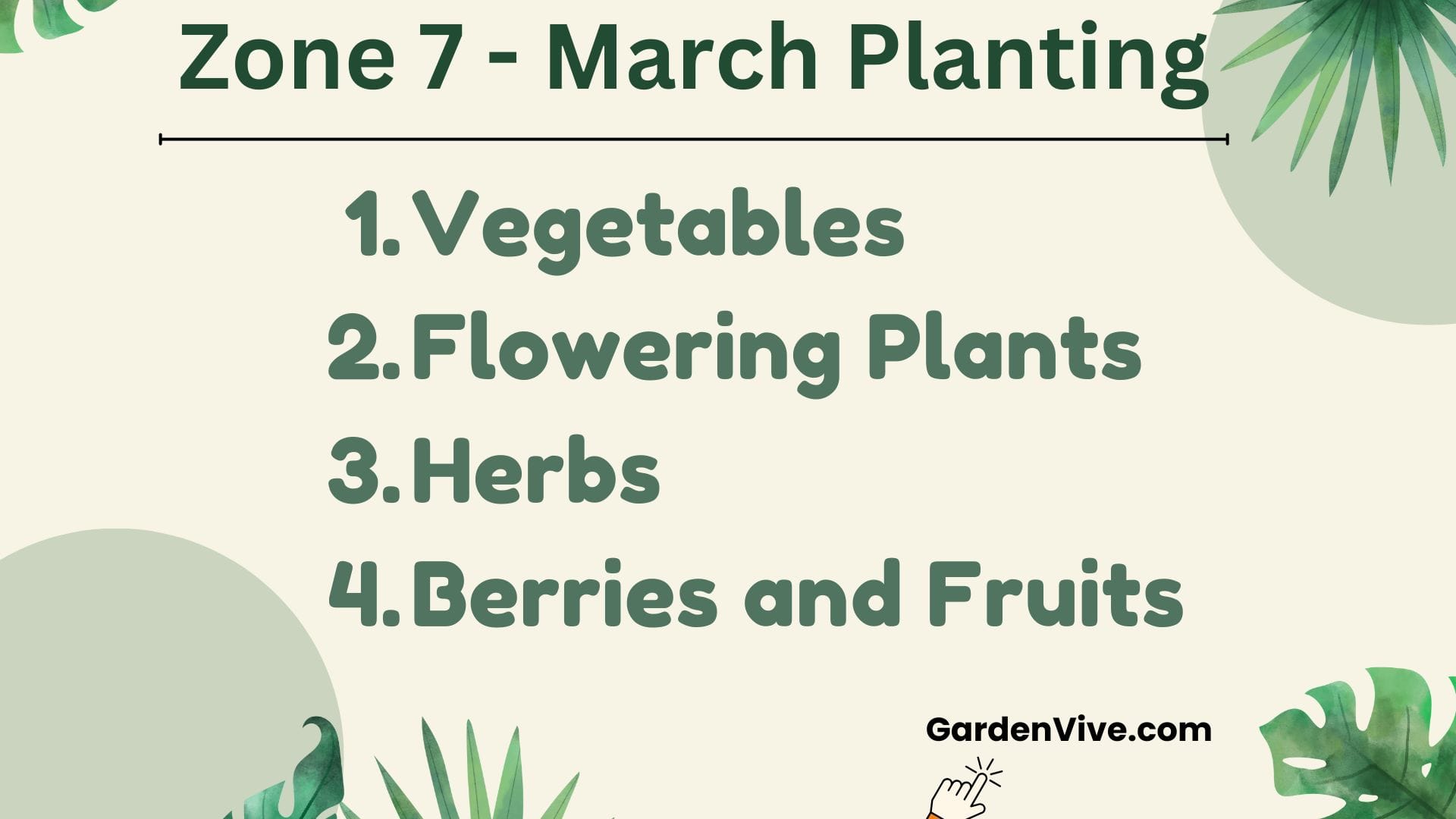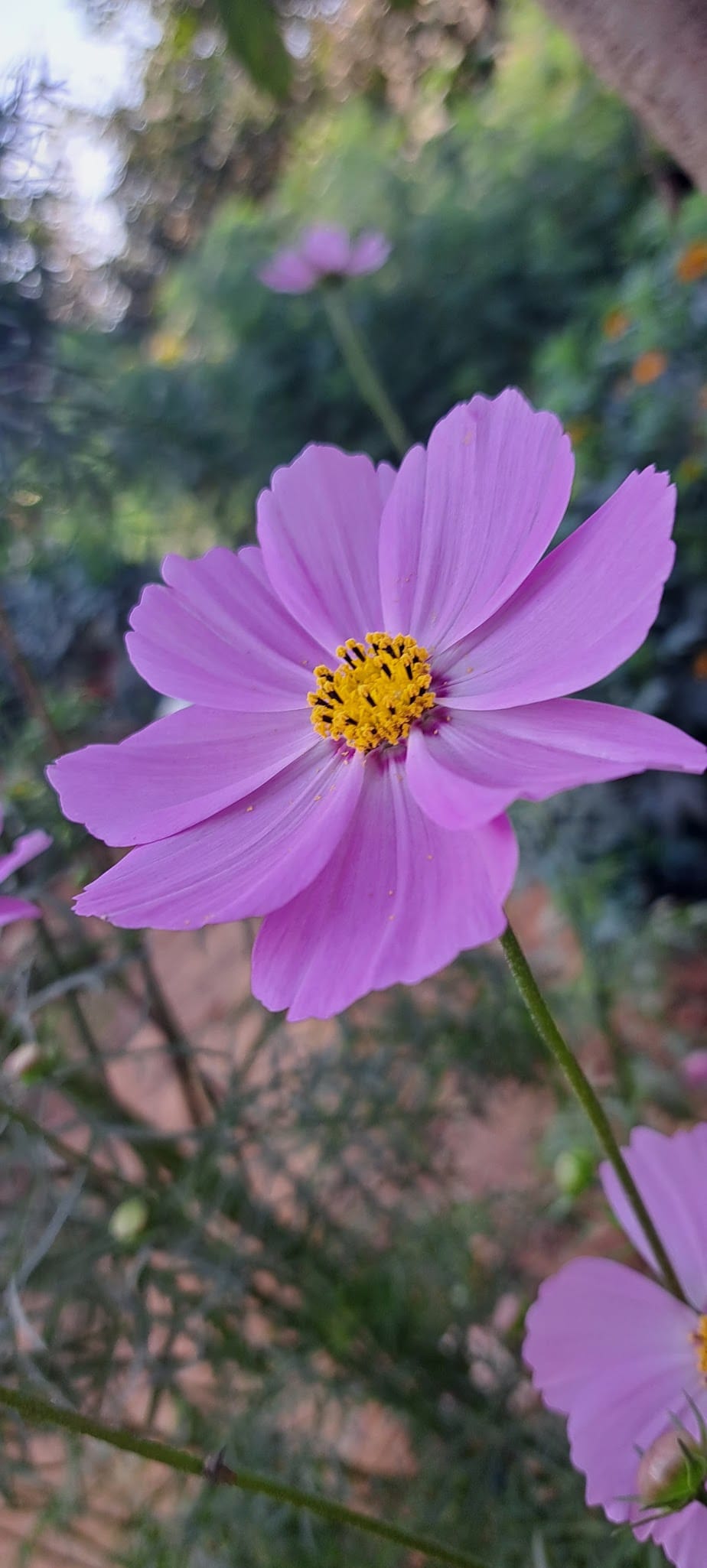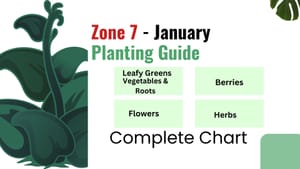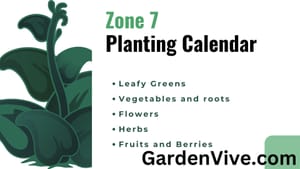
March is a transition month from winter to spring in Zone 7. Weather can be quite variable this month. This is why we need to choose what to plant wisely in March. In this article, you will find several charts for what to plant in March in Zone 7.
Note: Zone 7 in Florida is not the same as Zone 7 in CA. USDA Zones can be used to check planting schedules, but its better to go for planting schedule based on location.
This is just a monthly planting chart for Zone 7. It will show you what plants can be started in March here. If you want the best planting time, have a look at: The Zone 7 Yearly Planting Schedule (charts)
Vegetables to plant in March in Zone 7
Some of these vegetables are instructed to start indoors considering the March weather in Zone 7.
| Vegetable | Planting Method | Transplanting Time | Variety Recommendation | Expected Harvest Time |
|---|---|---|---|---|
| Carrots | Direct Sow | N/A | Napoli, Danvers 126 | 60-75 days |
| Spinach | Direct Sow | N/A | Bloomsdale, Space | 40-50 days |
| Broccoli | Start Indoors | After 4-6 weeks | Waltham 29, Green Magic | 70-85 days |
| Kale | Start Indoors or Direct Sow | After 4-6 weeks (if indoors) | Dwarf Blue Curled, Lacinato | 50-65 days |
| Peas | Direct Sow | N/A | Oregon Sugar Pod, Sugar Snap | 55-70 days |
| Lettuce | Start Indoors or Direct Sow | After 3-4 weeks (if indoors) | Buttercrunch, Romaine | 45-60 days |
| Beets | Direct Sow | N/A | Detroit Dark Red, Golden | 55-70 days |
| Cabbage | Start Indoors | After 4-6 weeks | Brunswick, Early Jersey Wakefield | 80-100 days |
| Onions | Sets or Direct Sow | N/A | Texas Super Sweet, Red Burgundy | 90-120 days |
| Swiss Chard | Direct Sow or Start Indoors | After 3-4 weeks (if indoors) | Bright Lights, Fordhook Giant | 50-60 days |
| Radishes | Direct Sow | N/A | Cherry Belle, French Breakfast | 25-35 days |
| Turnips | Direct Sow | N/A | Purple Top White Globe, Hakurei | 50-60 days |
| Collard Greens | Start Indoors or Direct Sow | After 4-6 weeks (if indoors) | Georgia Southern, Vates | 60-80 days |
| Mustard Greens | Direct Sow | N/A | Southern Giant Curled, Red Giant | 40-50 days |
| Cauliflower | Start Indoors | After 4-6 weeks | Snowball, Amazing | 70-85 days |
| Brussels Sprouts | Start Indoors | After 4-6 weeks | Long Island Improved, Dagan | 90-120 days |
| Parsley | Start Indoors | After 6-8 weeks | Giant of Italy, Moss Curled | 70-90 days |
Usually, I love separating leafy greens, roots, and vegetables. But the early March is still cold enough to start most of the veggies outside. As the list is not so long, I have merged those into a single chart.
Note: Carrots don’t transplant well, so plant them directly in the garden. This is my personal opinion. If you feel comfortable in transplantation, go for it.
Flowering plants to plant in March in Zone 7
I know the importance of blooming time for flowering plants. Blooming time can be found in the last column of the following chart:
| Flowering Plant | Planting Method | Transplanting Time | Perennial or Annual | Fragrance | Blooming Time |
|---|---|---|---|---|---|
| Marigold | Direct Sow or Start Indoors | After 4-6 weeks (if indoors) | Annual | Mildly Fragrant | Late Spring to Fall |
| Pansy | Direct Sow or Transplant | N/A | Annual | Mildly Fragrant | Early Spring to Late Spring |
| Sweet Pea | Direct Sow | N/A | Annual | Highly Fragrant | Spring to Early Summer |
| Lavender | Start Indoors or Direct Sow | After 6-8 weeks (if indoors) | Perennial | Highly Fragrant | Late Spring to Summer |
| Black-eyed Susan | Direct Sow or Transplant | After 4-6 weeks (if indoors) | Perennial | Not Fragrant | Summer to Early Fall |
| Snapdragon | Start Indoors | After 4-6 weeks | Annual | Mildly Fragrant | Spring to Early Summer |
| Foxglove | Start Indoors or Direct Sow | After 6-8 weeks (if indoors) | Biennial (Acts as Perennial) | Mildly Fragrant | Late Spring to Summer |
| Dianthus | Direct Sow or Transplant | After 4-6 weeks (if indoors) | Perennial | Highly Fragrant | Spring to Early Summer |
| Cosmos | Direct Sow | N/A | Annual | Not Fragrant | Summer to Early Fall |
| Phlox | Start Indoors or Direct Sow | After 4-6 weeks (if indoors) | Perennial | Highly Fragrant | Late Spring to Fall |
| Zinnia | Direct Sow | N/A | Annual | Not Fragrant | Summer to Early Fall |
| Hollyhock | Start Indoors or Direct Sow | After 6-8 weeks (if indoors) | Biennial (Acts as Perennial) | Mildly Fragrant | Summer |
| Verbena | Direct Sow or Transplant | After 4-6 weeks (if indoors) | Perennial | Mildly Fragrant | Spring to Late Summer |
| Petunia | Start Indoors | After 6-8 weeks | Annual | Highly Fragrant | Late Spring to Fall |
| Yarrow | Direct Sow or Transplant | After 4-6 weeks (if indoors) | Perennial | Mildly Fragrant | Summer |
A plant might be perennial in a specific location and annual in another location. This is very normal. If a plant is perennial or annual at a specific location depends on the climate and daylight duration.

Herbs
You can consider planting a few herbs along with veggies or flowering plants. If you are interested in knowing the best compatibility check: companion planting guidelines
| Herb | Planting Method | Perennial or Annual | Culinary/Medicinal Use |
|---|---|---|---|
| Chives | Direct Sow or Transplant | Perennial | Culinary |
| Cilantro | Direct Sow | Annual | Culinary |
| Dill | Direct Sow | Annual | Culinary |
| Fennel | Direct Sow or Transplant | Perennial | Culinary & Medicinal |
| Lavender | Start Indoors or Direct Sow | Perennial | Culinary & Medicinal |
| Lemon Balm | Start Indoors or Direct Sow | Perennial | Medicinal |
| Marjoram | Start Indoors | Annual | Culinary |
| Mint | Transplant or Direct Sow | Perennial | Culinary & Medicinal |
| Oregano | Start Indoors or Direct Sow | Perennial | Culinary |
| Parsley | Start Indoors or Direct Sow | Biennial (Grown as Annual) | Culinary |
| Rosemary | Start Indoors or Transplant | Perennial | Culinary & Medicinal |
| Sage | Start Indoors or Direct Sow | Perennial | Culinary & Medicinal |
| Thyme | Start Indoors or Direct Sow | Perennial | Culinary & Medicinal |
| Tarragon | Transplant | Perennial | Culinary |
| Chamomile | Start Indoors or Direct Sow | Annual | Medicinal |
For the indoor starters, I have not added the transplanting time. For herbs, when you see them sturdy and the weather is much warmer, they are ready to transplant. Herbs do not die easily.
We love basil. With special protection, you can start basil in March but if you are not an expert, skip basil in March. Basil loves to grow well when the soil gets warmer.
Berries and fruits to plant in March in Zone 7
| Berry/Fruit | Planting Method | Perennial or Annual | Time to First Harvest |
|---|---|---|---|
| Strawberry | Transplant Bare Roots or Runners | Perennial | 3-4 months (first year), full production in 2nd year |
| Blueberry | Transplant Potted or Bare Root Plants | Perennial | 2-3 years |
| Raspberry | Transplant Canes | Perennial | 1-2 years |
| Blackberry | Transplant Canes | Perennial | 1-2 years |
| Grapes | Transplant Bare Root or Potted Vines | Perennial | 2-3 years |
| Apple | Transplant Bare Root or Potted Trees | Perennial | 3-5 years |
| Pear | Transplant Bare Root or Potted Trees | Perennial | 3-5 years |
| Peach | Transplant Bare Root or Potted Trees | Perennial | 2-4 years |
| Cherry | Transplant Bare Root or Potted Trees | Perennial | 3-5 years |
| Fig | Transplant Cuttings or Potted Trees | Perennial | 1-2 years |
| Plum | Transplant Bare Root or Potted Trees | Perennial | 3-5 years |
| Mulberry | Transplant Bare Root or Potted Trees | Perennial | 2-3 years |
| Gooseberry | Transplant Bare Root or Potted Bush | Perennial | 2-3 years |
| Currants (Red/Black) | Transplant Bare Root or Potted Bush | Perennial | 2-3 years |
| Persimmon | Transplant Potted Tree | Perennial | 3-6 years |
| Pawpaw | Transplant Potted Tree | Perennial | 4-7 years |
| Hardy Kiwi | Transplant Vines | Perennial | 3-5 years |
The most challenging part of growing fruit trees is having patience.
Blueberry production can be increased significantly if you choose the right pollinator variety. You can check: Blueberry cross pollination chart
If you want to avoid organic fertilizers, this is for you: Best homemade fertilizers for fruit trees



